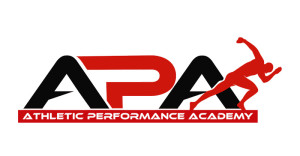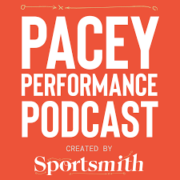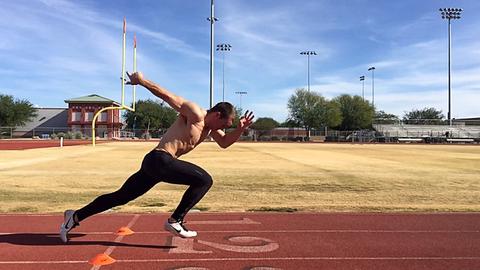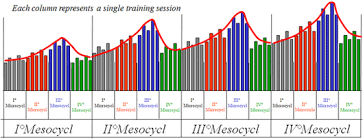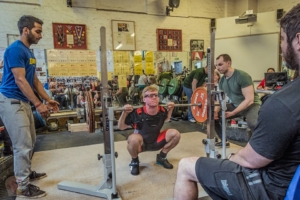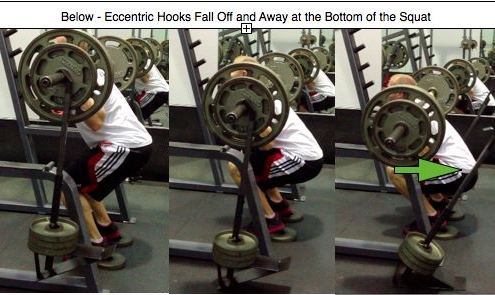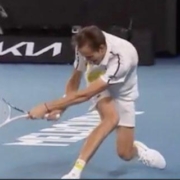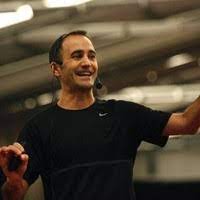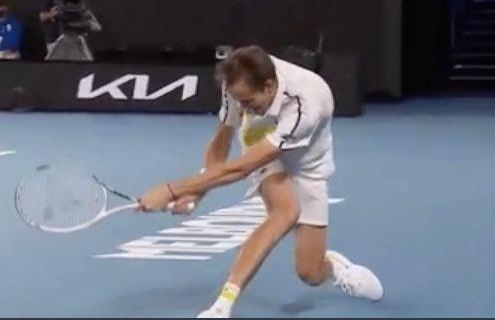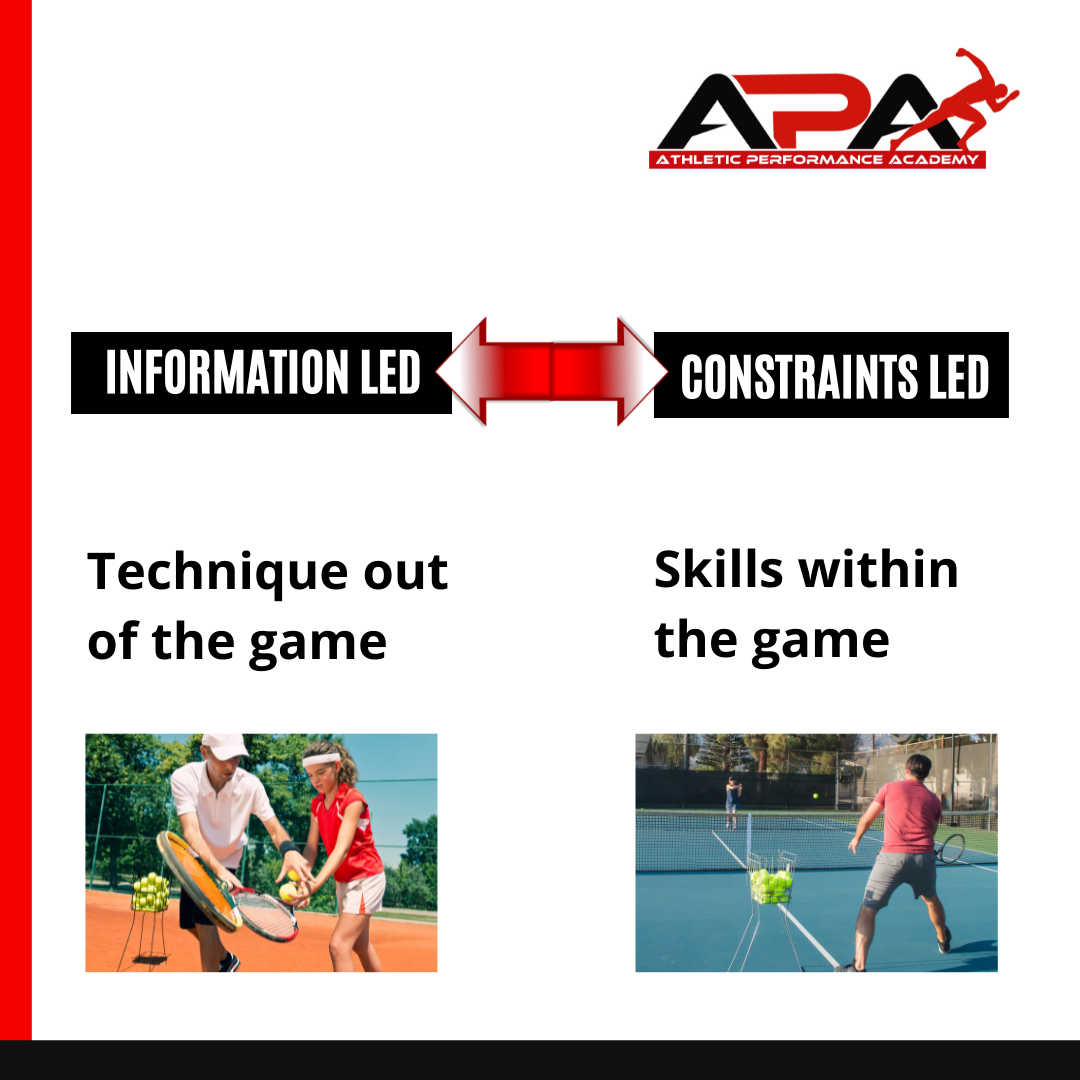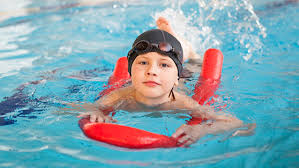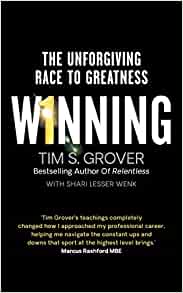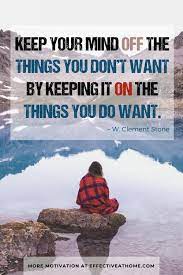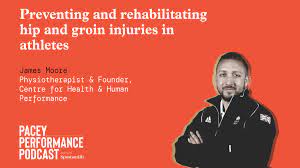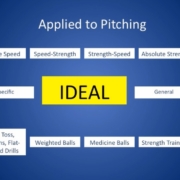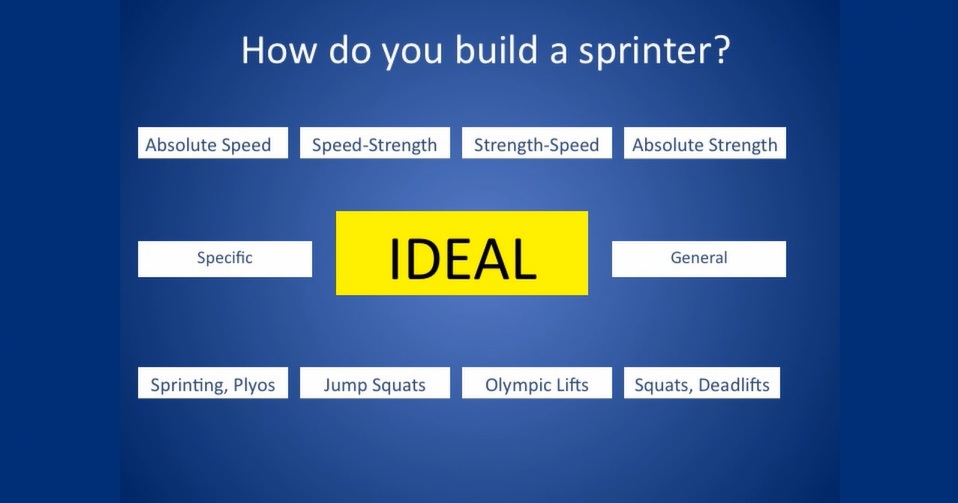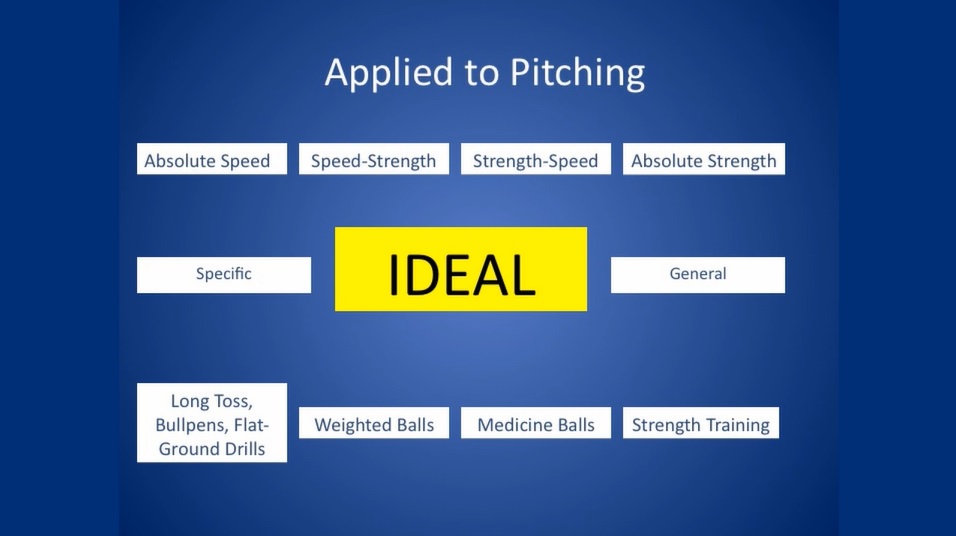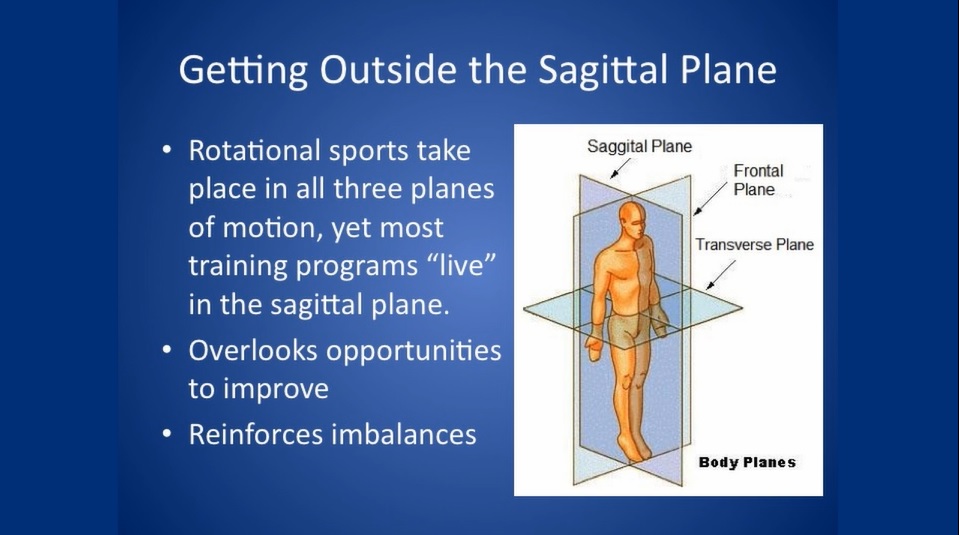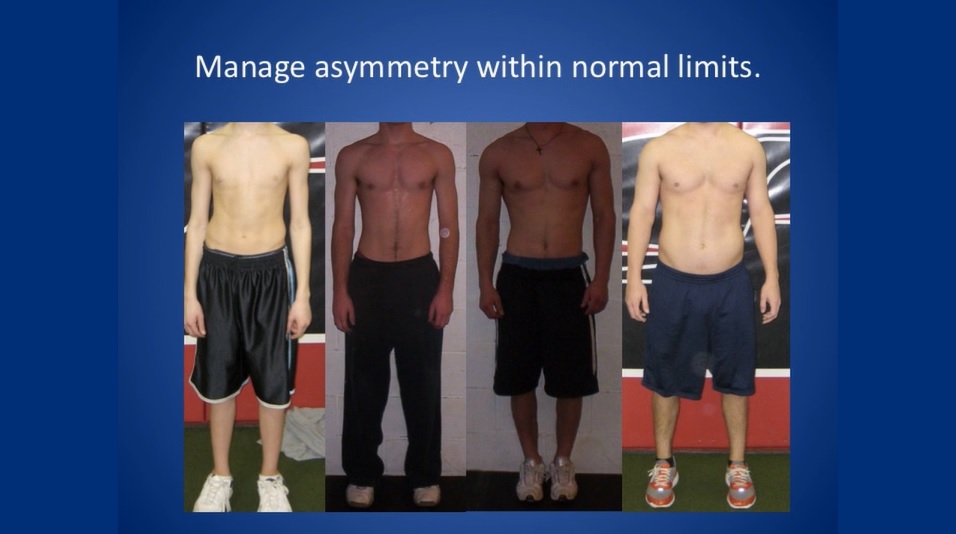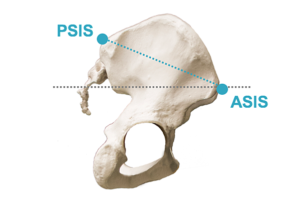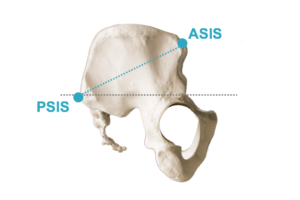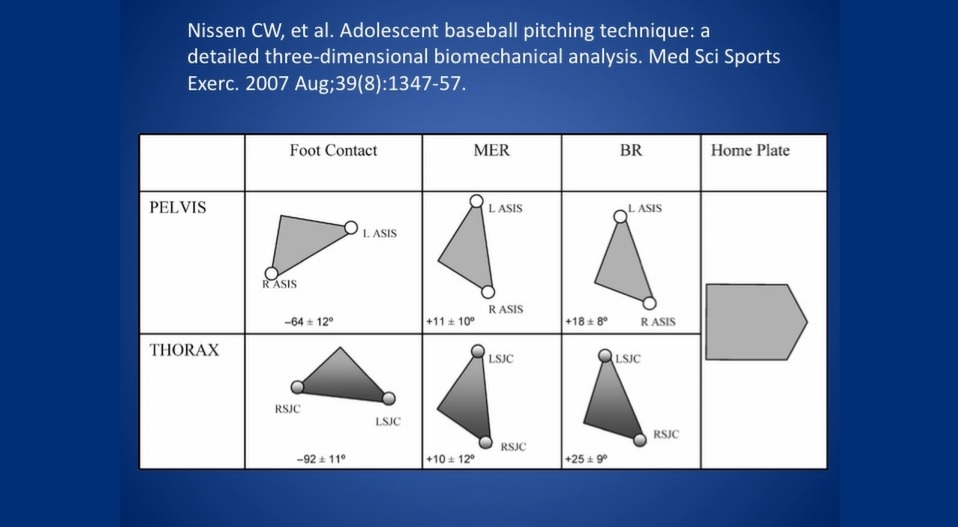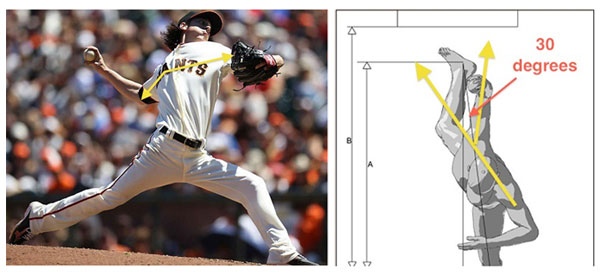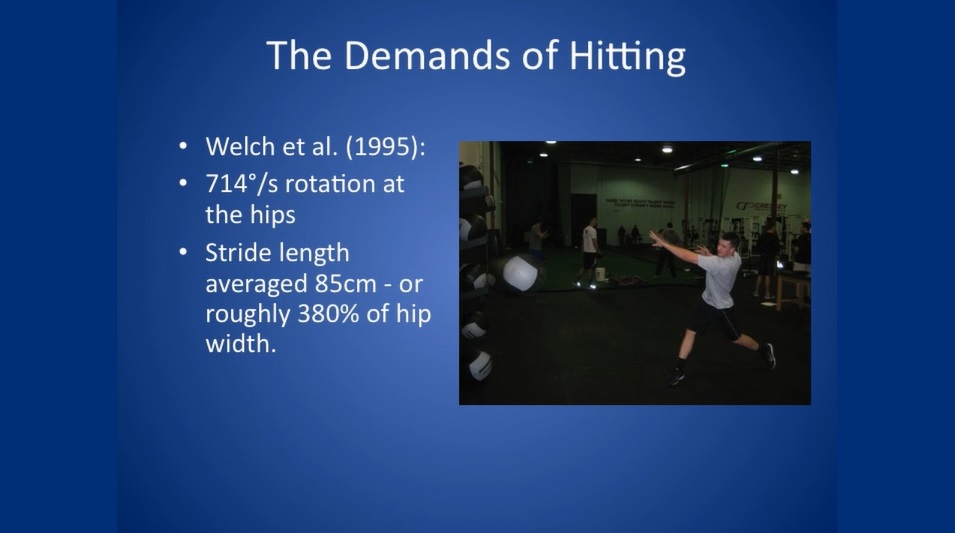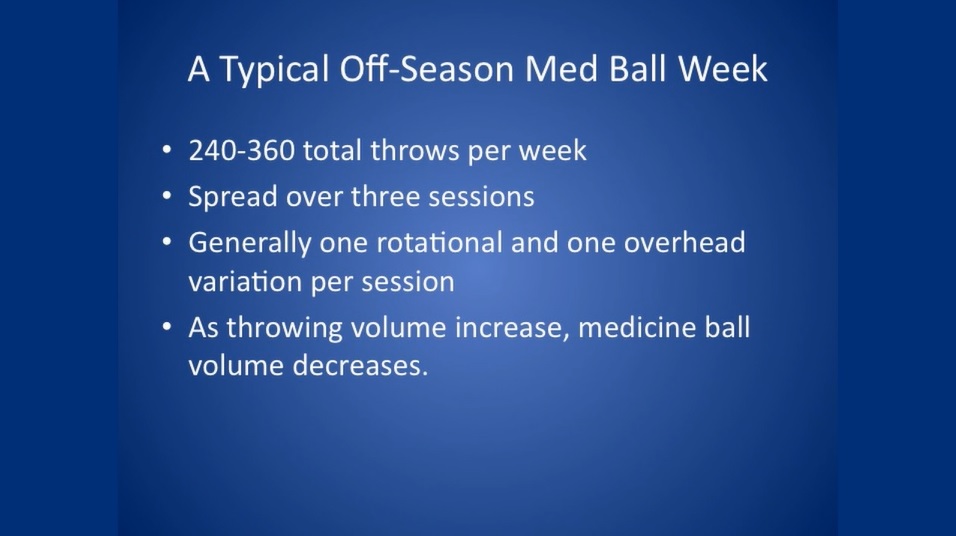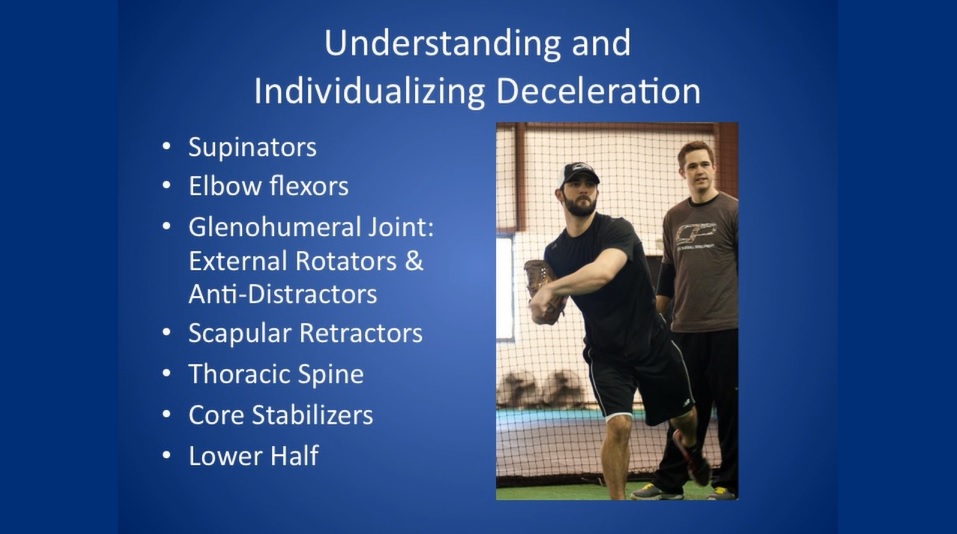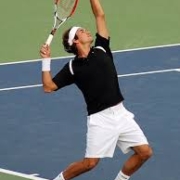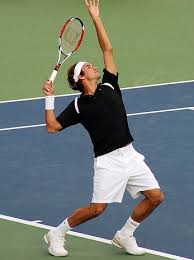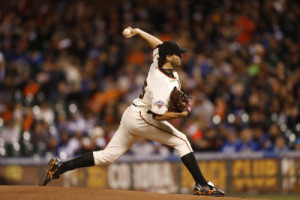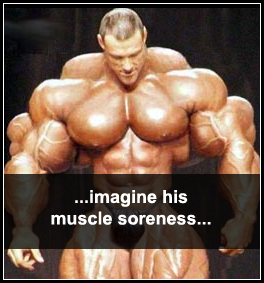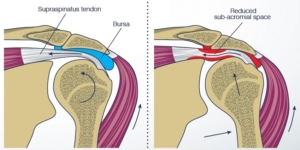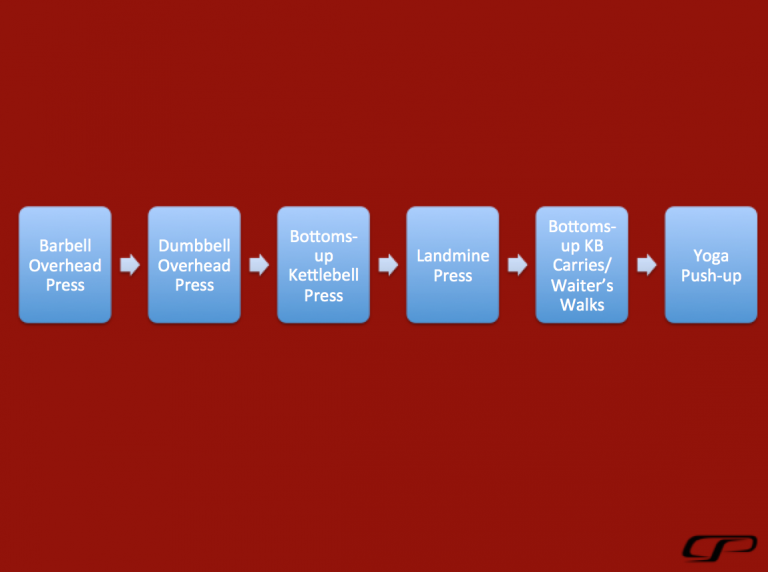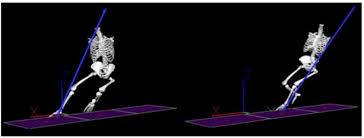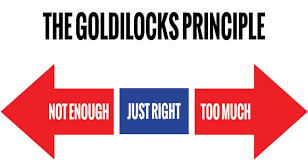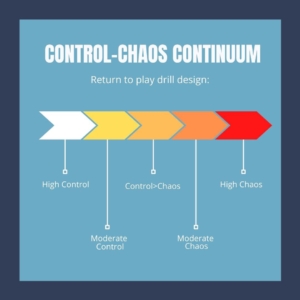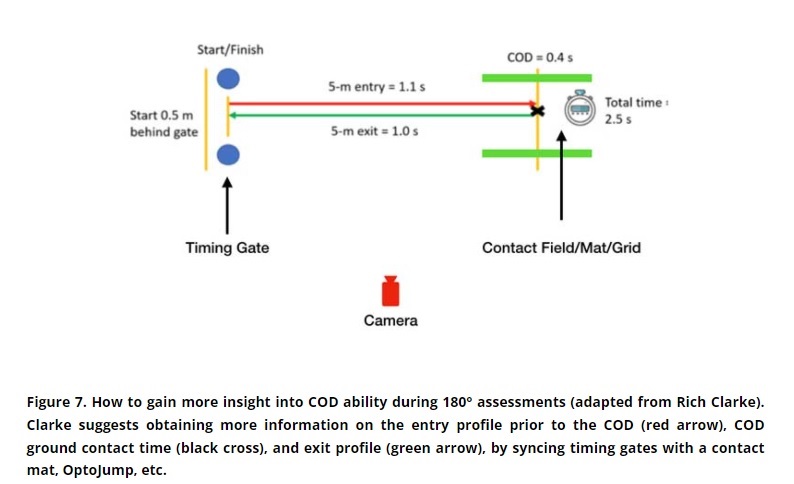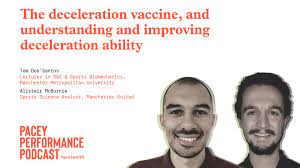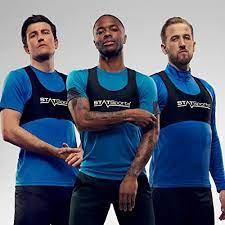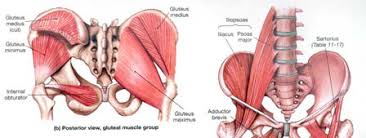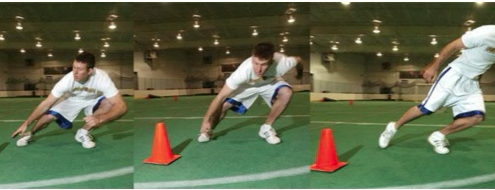This blog is a review of the Pacey Performance Podcast Episode 385 – Paul Comfort
The majority of the episode focuses on isometric training. Due to the amount and quality of information the full podcast review will be split up into two parts. This is a Part 1 of 2, which will focus on isometric testing. The second part will focus on practical applications of isometric training and eccentric training.

Paul Comfort
Paul Comfort is a Reader in Strength and Conditioning and programme leader for the MSc Strength and Conditioning at the University of Salford, and is this week’s guest on the Pacey Performance Podcast. He’s here to talk to Rob about isometric testing and training, and why there has been a recent resurgence in its popularity.
Twitter
🔊 Listen to the full episode here
”It comes up all the time that people like yourself or even those in very much applied positions in professional and collegiate sport have come through having done personal training. How important is that being throughout your career to have that grounding of, like you say, just hours and hours of coaching and hours and hours of convincing this person to come back and pay you?”
”I think it’s huge. It’s having the right communications skills and being able to build the right rapport with people quite quickly as well. But it is different on an individual level to when you’ve got a group of athletes and also different than when you’ve got a group of different athletes. You know, even if you look at Rugby League and Rugby Union, they come from totally different demographics. And then if you look at football, they generally don’t want to do much to stuff in the weight room. So you’ve got to get buy-in really quickly. So the ability to communicate and get some relatively complex concepts across to them but in really simple terms initially is really, really important. We see that with university students all the time that those that have done some personal training, while their knowledge may be lacking in some areas based on whatever course they’ve done, you know, they can be a weekend call sometimes, which really isn’t going to qualify you.
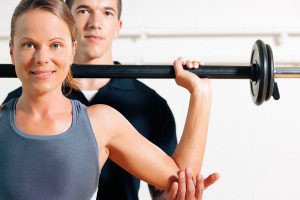
But if they’ve got the experience of coaching, whether that’s as a personal trainer, whether it’s as a sport coach, you know, a technical coach, whatever that is because they’re used to communicating, they actually pick things up so much better and they can get that information across the people so much in a much more user friendly way. And it comes across fluid and fluent rather than almost stage. You know, we teach students how to do this and you sort of give them a recipe of this is how you should approach it. And you can see them thinking, you know, almost that tick box approach, but it has to be natural otherwise it just looks forced.
So having develop those sort of skills to communicate effectively, whether it’s as a personal trainer or as a coach is really, really important. But also identifying that, you know, that there is a notable difference between what personal trainers normally do and what strength coaches normally do. There are some distinctions between them.
Get Relevant Experience
It’s definitely a big thing that we try and emphasize to our students from the first day they turn up, go out and get experience coaching. Yes, you may need to work in a bar or whatever to earn some money as a student, but go out and get some relevant experience which will develop those skills.
Unfortunately, as with every university, those students ignore that for the first two years, get to the third year and start panicking. They’ve got no experience in the areas when they look at what is required to get a job, or to get an interview for a job. But you know, some of them do go out there and do it and the students that I’ve seen, certainly over the last 13 years at the University of Salford have done that from day one and gone over and above with things like placement hours, etc, in their final year. They’re the ones that get the jobs at the end of it. And they’re the ones who we see develop that ability and their ability to communicate. Because I think sometimes if you’ve been through a university education, you forget how much you’ve learned and you forget all the technical terms you’re using, because everyone you’re around is using them. And then you say something to an athlete of any age and sometimes you just get a blank look and think, okay, that didn’t work and is being able to realize that they just didn’t understand at all what you’ve just said.
So yes, it’s definitely a really important skill for people to develop and you continually develop that over time. You know, even watching other people coach or train an individual and see how they cue them and they cue them in a different way and think, oh, brilliant, I’m stealing that, I’m using that next time.”
”In terms of hot topics on the podcast, one thing in particular is isometric testing and training, which is why I want to speak to you. If you combine it with speed the interest off the charts. People love speed. People love isometrics. So why do you think there’s been such a resurgence in the last couple of years of interest?”
”Well, I think you can look at it from two perspectives. One is the isometric assessments and now force plates are so much more available than they were. They’re so much cheaper to conduct those isometric assessments. And obviously you’ve got strain gauges, etc, that you can use for it as well.
But it means that that equipment is much more accessible. If you go into the majority of sports teams that I can think of, I think in fact, all of the ones at the higher levels that we work with through the university or that I consult with separately, they’ve all got force plates. And actually a lot of them invite you in not to discuss the training aspects, but right, we’re collecting all this data. We’ve got X number of metrics coming out. What the hell do they all mean? Which do I need to use because I want to try and inform my practice on a daily basis. But if I’ve got a hundred plus variables, which ones do I choose? So how do I rationalize that?
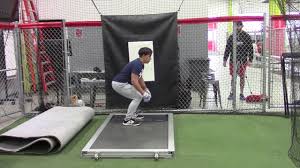
So I think that’s one reason that the testing has become far more popular and it’s been used more in the research and obviously as people read more research, then they start thinking, maybe I should use this method of isometric testing. And then with the isometric training, I think there’s a few things, you know, Alex Natera has done a fantastic job of making this popular and some of the information easily accessible. Danny Lum more recently as well, but actually there’s still that culture of avoiding heavy lifting which is a problem in itself. But at least if you have a strength type stimulus during isometric training it’s better than nothing. In my opinion, it should be used in addition to that sort of normal traditional training and still make sure you get progressive overload, but it definitely makes it more attractive in some situations.
And especially if you can try and use it for maintenance of strength during periods of fixture congestion, maybe you can just about give enough stimulus so the athletes don’t start to detrain over a short period of time. So I think that, they’re probably the two main things: it’s become more popular in terms of people promoting it on social media, and it’s something which people don’t fear like they do with heavy lifting. And there is still that culture at a whole range of different sports. And then the testing side, I think it’s just the fact that force plates are so much more accessible now.”
”In terms of the testing, so you’ve mentioned force plates, hundreds, and hundreds of metrics that are going to pop out. How do we distill that, understand what we need to use, what we want to use in our specific settings, what will be your process to try to understand that and the right end point?”
Peak Force and RFD
”Certainly with the isometric testing, it’s relatively straightforward from my point of view. People can disagree with me, but you need to know their maximum force production capability. We need to know what the highest force is that that individual can generate. So we need peak force and ideally you need relative peak force. We need to be able to scale that and divide that by their body weight, to make sure that it takes body mass into account, especially with youth athletes.
You can see this in all the research where people have assessed force production capability in youth soccer players or youth football players, indicating that they get stronger with age. Well, of course they do. They’re getting bigger, they’re getting heavier. Ratio scale it divided by body weight and it’s very, very rare you find anything in the literature in youth athletes that they get stronger. Which for me is a massive problem, because that tells me actually your strength training programs probably haven’t done anything. They’ve just maintained and allowed them to continue their ability to generate force relative to their mass.
If they didn’t do that training, maybe they would actually be relatively weaker. We don’t know, but it tells me that the strength training practices are far from optimal or far from ideal because they should be getting much stronger. And you can see that if you look at some of the work that Dan Baker has published in the past, where he’s looked at people over a 10 year period, and you might not only have small increases in strength, it wasn’t isometric strength, but only small increases in strength per year. But let’s say for example, you put 10 kilos on your back squat every year for five years. That’s a pretty impressive back squat. Put five kilos on body mass on every year for five years, you are going to look like a different person. You know, you’re going to look pretty impressive physically. Your increase in strength is outweighed by your increase in mass. So that’s a positive adaptation.
So we need those increases in peak force and we know that there’s a strong relationship between peak isometric force and rapid force development or rate of force development (RFD). So it’s definitely important to push that ceiling up. And then the other thing we need to look at is rapid force production. So how much force we can produce in certain time periods. So then you’re looking at anything from 50 milliseconds up to maybe 250 milliseconds and you can either just use force at those specific time points (so force at 150, 200, 250 milliseconds), or you can calculate rate of force development.
The only issue you have with rate of force development, because you are running additional calculations, you can introduce additional error to that. And there are loads of different ways of calculating rate of force development. It’s force divided by time, but is it from the onset of your force production to the peak? Is it from 100 milliseconds to 150? Is it the average across that time? There’s a really good study by Professor Greg Haff published back in 2015, where he looked at a whole range of different methods and recommend using a 20 second moving average window across the time points of zero to 150, 0 to 250, etc.
But not all software packages do that for you. So from my point of view, rather having to try and unpick exactly what your software package is or try and set up an Excel spreadsheet, which will look at the average across a moving average window of 20 milliseconds within 250 milliseconds, which even as I say it that sounds complex. If you just look at force at 100, 200, 250, whatever time points, if force increased at that point, your rate of force development at that time point must have increased over that duration because it goes up as almost a straight line.
It’s not like when we look at more dynamic tasks where that force-time curve can fluctuate. So if you just then look at force at specific time points, the other thing we can then do is identify if you’ve got an increase in strength, has your force production at certain time points increased in proportion to that? So if you look at the force at let’s say 250 milliseconds as a percentage of your peak force, how much of your peak force can you express in 250 milliseconds? If it’s currently 75% and we do a more plyometric, ballistic type of training and you find that goes up to 85% brilliant. That’s probably the desired adaptation you wanted.
If we do maximum strength training and you find that that force at 250 milliseconds drops from 75% down to 60%, we then need to take into account both what that peak force has gone up to and what your force at 250 milliseconds is. Because if you force at 250 has still increased, that’s fantastic. And that can still increase, but it’s just not to the same magnitude as your peak force. In which case then that tells us our max strength training was really effective. We haven’t suffered issues in terms of the ability to produce force rapidly, which some people worry about. That’s normally when you have a really high volume of training, but you would know that was about to happen because you’d plan to increase volume over time. And then what we look at is if that force is now 65% and it was 75%, well, the force at 250 was 75% of your peak force. Now it’s 65%, we’ve got to focus on the ability to express that force rapidly.
And as I said earlier, your maximum force generating capacity does have a strong relationship to your ability to produce force rapidly, but only if you’re not fatigued at that point. So if you’ve done a high volume of training, you need to back off a little bit. So that might tell us we need to focus on the more ballistic and plyometric training, not completely exclude heavy resistance training, but focus more on the ballistic and plyometric to shift that percentage up.
So sometimes what we’ve got to do is move that percentage, the ability to express force rapidly is got to move up in terms of the percentage of peak force you can generate. Other times if you’re up at 85% of your peak force being expressed in 250 milliseconds, your athlete’s ability to express that force in ballistic dynamic task is fantastic. And actually just chasing after that extra few percent, you’re not going to get anything. You’ve probably hit a threshold. Now, I don’t know what that exact threshold is, so don’t take me on 85% but if you find that that’s not improving dramatically, then you need to increase that ceiling. You need to increase your threshold. You need to get that maximum force production capability up.
Rugby versus Football
And as to give two examples, I’ve regularly seen when people have done sort of this type of testing with football players, that their ability to express force rapidly is good because of the nature of the sport and the type of training they do. But their ability to express a maximum force that we would consider to be high is pretty poor. So they need to emphasize more strength development in most cases, not all, but in most.
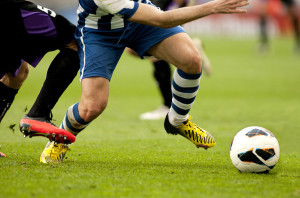
Whereas is if you look at rugby players, it tends to be more of the reverse, especially with Rugby Union forwards, their peak force is phenomenal. Their ability to express it rapidly is not as good as it could be, but actually if they’re your front row forwards and they’re always in scrums, and they’re a wrecking ball, they probably don’t need to express that force quite as quickly as some of the backs would do.
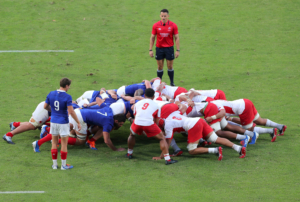
So you’ve also got to get the context on this. What do we really need from our athlete? And sometimes go back to the coach and say, how are you going to play this athlete? Are they just going to be that destructive person on the pitch, but they never run more than 20 metres so their contact times are still relatively long compared to if you get to top speed.
Isometric squat versus Isometric Mid thigh pull (IMTP)
So I think the key thing is if we go with peak force relative to body weight, and if we also express their force at different time points, probably 150, 200, 250 milliseconds, look at those alone, but also look at those as a percentage of your peak force and see how they change over the time. That’s giving you a really holistic picture from one test, but at the same time, those values and those variables will change depending on the test you do. So if you do an isometric squat, the forces are consistently higher than you get from an isometric mid thigh pull. So you need to bear that in mind. Some people don’t like the isometric squat because of the compression when you’re trying to push rapidly. So with some individuals, there’s a lot of familiarization then required.
You get the same with people with the isometric mid thigh pull because of the lifting straps, which you must use, otherwise grip strength will mean that you don’t get a maximum force production. If they’re not used to lifting straps and they dig into their wrists, that pain creates inhibition. They won’t push as hard and fast as they can. So that in itself is a bit of an issue.
And then if you look at most of the research it’s been done so far, it’s just looking at ”push as hard and fast as you can.” But we can improve the reliability of the rapid force development if we adopt the strategy that’s done with single joint isometrics, when you tell them to kick out as fast as possible, to be explosive, to be ballistic. Now that might seem strange (and I am a bit of a stickler for using the correct terminology and the semantics) to say that as it can’t be explosive. It can’t be ballistic, it’s isometric, but that’s your cue to the athlete! So they know they’re aiming to explode. Nothing explodes, we know that, but they’re aiming to be explosive. They’ll understand that term.
So you can actually do two different protocols. And David Drakes published this a few years ago on the isometric squat and Stuart Guppy one of Greg Haff’s PhD students has just had something accepted in, I can’t remember now whether it’s sports, biomechanics or journal strength and conditioning research, it’s one of them which will be out soon, looking at the isometric mid thigh pull. And if you use that approach, so you do an impulsive effort, an explosive effort of only one second, you get much higher rates of force development, much higher forces at different time points. And it dramatically improves the reliability of those rapid production capabilities. But your peak force comes down because you’re only pushing explosively for one second. Your focus is fast force production, not maximum force production.
So in that situation, you probably need to do your three to five maximum efforts for peak force. So four to five -second efforts and if you can see the force trace on the screen and it starts to come down, let them stop at that point. They’re not going to get any higher. They’ve already started to fatigue. Do those three to five trials (for peak force). And then at the end of that, get them to do some one second efforts to get that rapid force production (for RFD). One second effort, 30 seconds to a minute rest and repeat. It adds two or three minutes onto your testing, but you’ll get much better data out of that in terms of your rapid force production.
Now, a word of caution with that though, there’s minimal data out there published on those forces at different time points or rate of force development using that explosive ballistic or impulsive protocol. So you can’t then compare that to most of the other published literature. But if you are a practitioner using this to monitor your athlete’s performance, it’s a more stable measure when you use that sort of ballistic or explosive approach.”
”Would the time points that we’re interested in differ based on the type of athlete that we’ve got or the type of sport that we’re working in, or would that be pretty consistent?”
”I’d say for most people probably stick pretty consistent with 150, 200, 250 milliseconds, but there are some examples when you might want to increase or decrease that. And if you are looking at the shorter time points a hundred milliseconds and 50 milliseconds, the only issue with that is sometimes the data isn’t reliable. So for practitioners, if they’re going to do that, they need to try and establish reliability between sessions because we’re not worried about a change in a session. We’re looking at change between sessions.
So if they come in fresh on a Monday morning, establish the reliability of your athletes, performing the test and exactly the same way while they’re fresh, ideally pre-season so you haven’t got a game at some point over the weekend, so you can figure out what your measurement error is. And if that’s large, if you are getting a measurement error of greater than sort of 10, 15%, at force at 50 and a 100 milliseconds, it don’t bother because it’s not going to tell you anything and then go with those longer time points.
Sometimes you might want to go with a longer durations, longer than 250 milliseconds depending on the sport. If you have longer contact times, if you are really interested in your initial few strides starting to accelerate, or if you’re looking at other sports where maybe they have longer contact times involved, that might be important. But actually if you’re using 150, 200, 250, we know that that’s a pretty much a linear increase. It’s less stable at the bottom. It’s got a bit of a curve to it, which is why that 50 and 150 milliseconds can be problematic with reliability. But beyond 250, it pretty much just keeps going up at the same angle it was before. Without wanting to introduce a lot of extra variables, it’s probably easiest to stick most of the time without 100, 150, 200, 250 millisecond sort of frame because they come out as the most reliable as well.”
”If there’s practitioners out there who haven’t got access to force place, which there may be many, what other options have we got? What other options have they got?”
”Well, you’ve got a couple of options. One is try and get access that doesn’t necessarily mean buy the equipment. Contact your local university, if you know they’ve got a decent sports science department there and see if you can either go in and do the testing, or if they’ve got portable force plates, they can come out and assist you. Most universities will be willing to collaborate with you, because it’ll give them data. It makes their staff more credible and you can also give great opportunities for the students to be part of that testing, for them to gain additional experience. And the amount of jobs out there at the moment where people require the applicant to have an understanding of how to use that equipment, that’s essential. So that’s one way you can get access.
The other thing you can do is there’s quite a few strain gauges on the market which you can purchase relatively cheap. Probably not quite as reliable because you can get additional movement (anterior, posterior, mediolateral) and it’s not quite as stable as what you get when you set up an isometric mid thigh pull normally. But you can do that and Lachlan James has published a paper on the reliability of using a strain gauge instead and I think Anthony Turner and maybe Chris Bishop down at Middlesex University have published something similar as well. So you can get reliable force data out of it.

The biggest issue is if you are looking at force at different time points, is trying to really understand what sampling frequency is required. So if you are looking, just to make the math easier, if you had a strain gauge, which only samples at a hundred Hertz, and you are looking at force at a hundred milliseconds, you’re going to get 10 samples. You’re going to miss a load of information. So unless you’ve got a sample and frequency of thousand Hertz, you’re probably not going to be able to look at that rapid force production capability with anywhere near as much reliability. But that’s the same with the force plate. Ideally you want force plates where you can sample at thousand Hertz for assessing these isometric variables when you’re looking at those shorter time points.”
”What are your thoughts on using things like strain gauges in more sport specific positions?”
”Well, it depends what you mean about sport specific positions. (@Rob: I’m just thinking of like a for potential for sprinting mechanics, looking at the horizontal one, two boxes and looking at the strength and them kind of positions).
If you’re looking at single joint isometric type testing with a strain gauge when you look at the huge amount of research that’s been done in that area, as long as you standardize everything about their position and their posture and everything else is fixed, it’s really reliable.
If you’re looking at trying to get multi-joint in a sports specific type task, because your posture in your position will vary, it tends to be very, very variable. The other issue is if you find that somebody’s not producing a huge amount of force, then you’ve got to try and figure out why. And if it is a multi-joint whole body type movement if it’s something through the upper body, are you looking at how effectively they apply force to the ground, how effectively they transfer that through the trunk, how it comes through the shoulder joint etc. So as soon as you start trying to go to sport specific, we actually generally make the testing methods so unreliable that it’s not really telling us anything, or even if we can get them reliable, we don’t know where the weak link is. We just know, actually there’s a deficit here and then we’d have to scratch our heads and think, well, how do we find out what the problem is within this?
So the standard sort of testing with multi-joint, which relates back to performance and athletic tasks is probably your best place to start. If there is an issue with your athlete, they’ve been injured, they keep picking up injuries, you probably need to go to the single joint stuff to evaluate that and identify if there are any discrepancies between limbs or between agonists and antagonists. But the really sport specific stuff starts getting a bit tricky unless you can actually fix the lower body, for example. And if you are then looking at the lower body contribution, then it starts getting really tricky.
If you start trying to look through the entire kinetic chain, then we get all sort of issues. And that’s whether it’s a strain gauge or most isokinetic devices will have a weird and wonderful array of attachments, golf handles, baseball bat handles, all these sorts of things. But from my experience, because there are limited standardized protocols for them, and it varies dramatically between people testing, you just don’t end up with any reliable results when you try and go sport specific with it. For that you probably need to wait until good, markerless motion capture systems can do your 3D motion capture when you can then model exactly what’s happening in detail.
That’s far beyond my understanding in how you use them. But that’s certainly an area that people can look at if they want to go really sport specific, because then you are not constrained with your movement patterns or being in a lab environment. If you’ve got a good markerless motion capture system, you can really evaluate the quality of movement and potentially then approximate the forces that are being generated, etc.”

Top 5 Take Away Points:
- Isometric training/testing – use it for maintenance of strength during periods of fixture congestion.
- KPIs for isometrics – Peak Force (relative to body mass)and Rate of Force Development (RFD)
- Validity/Reliability – be aware of different time points used for testing and also the different tests (isometric squat vs IMTP, and 50, 100, 50 ms etc).
- Time period of isometric – for peak force perform 3-5 trials of up to 4-5 seconds and for RFD use a 1-second explosive effort.
- Strain gauges could be a less expensive alternative to force plates, but will be less reliable. Likewise single joint tests will be more useful than multi-joint isometric assessments.
Want more info on the stuff we have spoken about?
Paul Comfort Research Gate
You may also like from PPP:
Episode 383 James Moore
Episode 381 Alastair McBurnie & Tom Dos’Santos
Episode 380 Alastair McBurnie & Tom Dos’Santos
Episode 379 Jose Fernandez
Episode 372 Jeremy Sheppard & Dana Agar Newman
Episode 367 Gareth Sandford
Episode 362 Matt Van Dyke
Episode 361 John Wagle
Episode 359 Damien Harper
Episode 348 Keith Barr
Episode 331 Danny Lum
Episode 298 PJ Vazel
Episode 297 Cam Jose
Episode 295 Jonas Dodoo
Episode 292 Loren Landow
Episode 286 Stu McMillan
Episode 272 Hakan Anderrson
Episode 227, 55 JB Morin
Episode 217, 51 Derek Evely
Episode 212 Boo Schexnayder
Episode 207, 3 Mike Young
Episode 204, 64 James Wild
Episode 192 Sprint Masterclass
Episode 183 Derek Hansen
Episode 175 Jason Hettler
Episode 87 Dan Pfaff
Episode 55 Jonas Dodoo
Episode 15 Carl Valle
Hope you have found this article useful.
Remember:
- If you’re not subscribed yet, click here to get free email updates, so we can stay in touch.
- Share this post using the buttons on the top and bottom of the post. As one of this blog’s first readers, I’m not just hoping you’ll tell your friends about it. I’m counting on it.
- Leave a comment, telling me where you’re struggling and how I can help
Since you’re here…
…we have a small favor to ask. APA aim to bring you compelling content from the world of sports science and coaching. We are devoted to making athletes fitter, faster and stronger so they can excel in sport. Please take a moment to share the articles on social media, engage the authors with questions and comments below, and link to articles when appropriate if you have a blog or participate on forums of related topics. — APA TEAM
=> Follow us on Facebook
=> Follow us on Instagram
=> Follow us on Twitter
